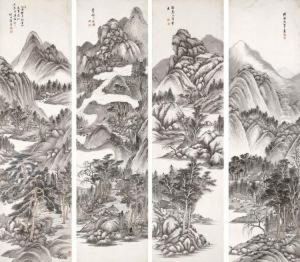Xue Xuan Paintings
Xue Xuan was a Chinese official and scholar during the Ming Dynasty, born in 1389 in Suzhou, Jiangsu Province. He is not widely known for contributions to the visual arts, but rather for his role in civil service and his scholarly achievements. Xue Xuan passed the imperial examinations with high honors and served in various governmental positions throughout his life. His career was marked by integrity and a commitment to Confucian principles, which garnered him a great deal of respect from his contemporaries.
Xue's scholarly work focused on Confucian classics, and he was part of a movement that sought to return to a purer interpretation of Confucian texts, as opposed to the more liberal interpretations that had become popular in the preceding Yuan Dynasty. He is often associated with the early Ming Dynasty intellectual trend that emphasized the importance of moral integrity and upright governance, which was in line with the Neo-Confucian revival of that period.
Throughout his life, Xue Xuan was involved in compiling and editing several important literary and philosophical works. His contributions to the field of education were significant, as he worked on reforming the curriculum for the civil service examinations, which were the primary means of selecting government officials in Imperial China. This had a lasting impact on the educational and administrative systems of the time.
Upon his death in 1464, Xue Xuan left behind a legacy that was upheld by his descendants and followers, who continued to promote his scholarly and moral ideals. Although Xue Xuan is not primarily remembered as an artist, his influence on the literature and moral philosophy of the Ming Dynasty was substantial, and he remains a respected figure in the annals of Chinese history. His life and work are indicative of the broader intellectual currents of his time, which valued ethical governance and the study of classical texts.
